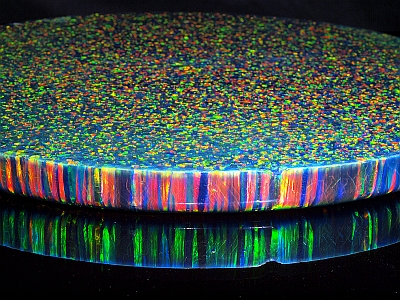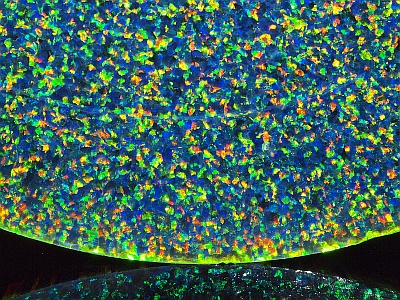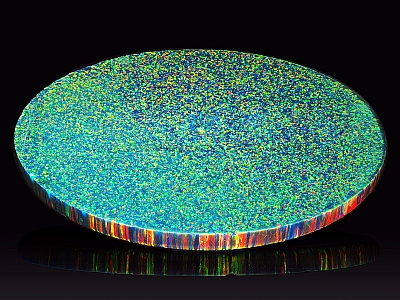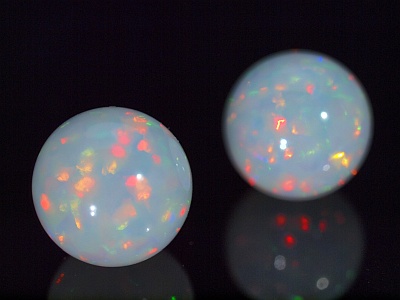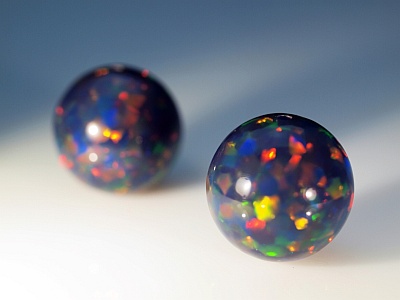Email us at goldberg@pinfire.de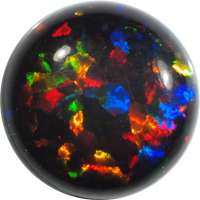
Impregnated Synthetic Opal in Different Colors
Fine Crystalline Aurora Opal and Coarse Crystalline Imitation Opal
Gilson-like Opal - Resin Free Created Opal
Opal Samples: Synthetic Opal Shop
Lab Created Opals with Different Patterns
Synthetic Opals, Gilson-like Opals & Lab Created OpalsLab Created Opals and Impregnated Synthetic Opal - Details and Description
Coarse and Fine Crystalline Opals with a Non-Directional Pattern of Play-of-Color
Based on various space experiments performed under microgravity, these lab created opals are the world's first samples of homogeneously crystallized opals, also known as colloidal or photonic crystals. This type of man-made opal shows an intense play-of-color with an irregular, non-directional and polygonal pattern like natural opals, but without any cracks, inclusions or host rock (matrix).
These lab opals don't show a columnar pattern typical for opals grown by sedimentation. Thus, an orientation of the opals prior cutting is not necessary anymore.
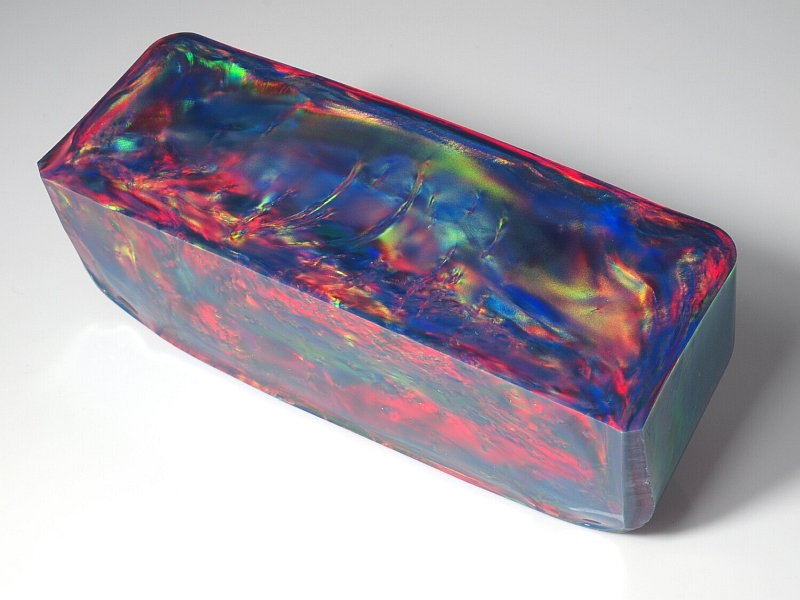
Furthermore, in contrast to conventional impregnated synthetic opal the new preparation method by homogeneous crystallization allows a significant lower silica content.
This makes the processing of the coarse and fine crystalline opals much easier and both opal types can be drilled, carved, sliced and cut by standard carbide tools.
The non-directional and coarse-grained pattern with big crystallites make the lab created opals an ideal material to cut colorful beads, teardrops and cabochons for jewelry.
But of course, the opals can be used also as inlays for musical instruments and furniture, as mosaic tiles or handle material for knives, brushes and other exclusive objects.
Furthermore, the size of the opals allows carving of big objects and sulptures, solid opal rings and bangles.
Be inspired by our Gallery of Rough Opals
A special variety of our lab created opals are fine crystalline "Aurora Opals" with an impressive swirly or flame-like pattern of play-of-color.
These man-made imitation opals are available in three bright different colors as opals with Green, Blue and Orange as dominant colors. More information: Aurora Opals
We offer also a new type of synthetic opal with a columnar pattern. Our synthetic opals are available as white, blue, pale blue, turquoise, black and orange fire opals with a play-of-color in orange, red and green. Due to a higher silica content (= lower content of resin) the synthetic opals display a higher strength, toughness and better chemical and abrasion resistance compared to similar opals. Additionally, in contrast to the irregular synthetic opal fragments offered elsewhere, the consistent thickness of our synthetic opal slabs allows a more efficient processing (higher yield). More information: Synthetic Opal
The newest type of our opals are the Gilson-like opals.
These opals have exactly the same physical and chemical properties as natural opals and are therefore the ideal material for sustainable jewelry.
All our lab created opals are offered only as rough opals, either as blocks (coarse crystalline and fine crystalline opals) or as fragments/slabs (synthetic opal, resin free Gilson-like opals).
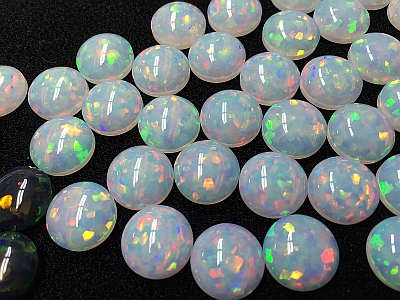
White and Black Opals
Cut Opals (Cabochons)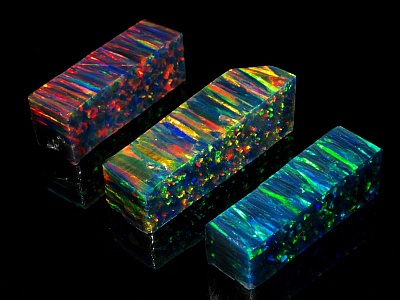
Synthetic Black Opals
Rough OpalsBlack and White Opal
Opal BeadsSynthetic Opal, Imitation Opal, Created Opal
Opaline Materials, Colloidal Crystals, Photonic Crystals
Imitation opal is what people usually think of as artificial or fake opal. It is a substance that resembles opal in visual appearance but has different chemical and physical properties. Imitation opals can be either inorganic with a different composition than natural opal, organic (resin based) or inorganic/organic composites showing a play-of-color.
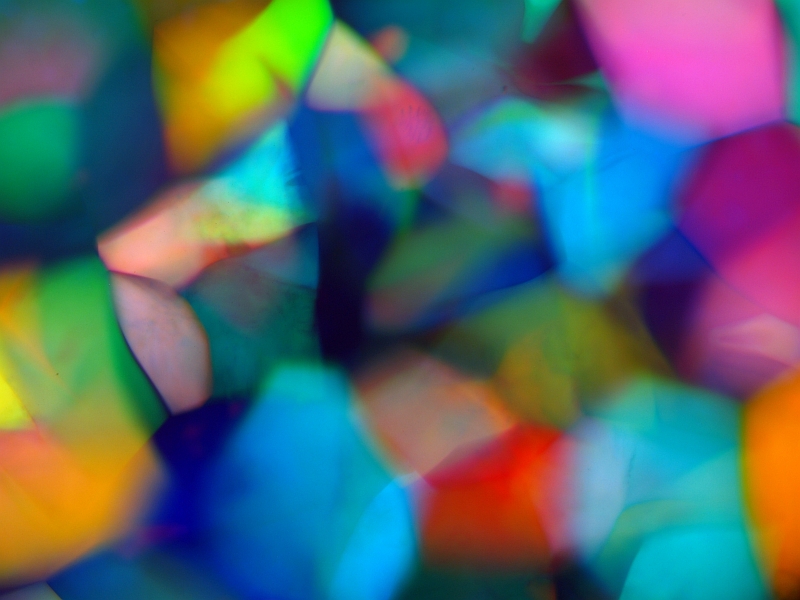
Aurora Opal and the coarse crystalline type are considered to be imitation opals, because both types are composed of 20% silica and 80% resin. Because of the structure and properties, such materials are also called "Opaline Material" or "Photonic Crystals/Colloidal Crystals". Some people mistakenly assume that Aurora Opal is a synthetic opal. But strictly speaking, Aurora is an imitation opal that shows angle dependent colors but is not a synthetic opal.
Please keep in mind that not all synthetic opals are of the same quality. Resin free synthetic opals like Gilson-Opal or our Gilson-like opal with the same properties as natural opals can be tens of times as expensive as low-quality natural occurring precious opals.


